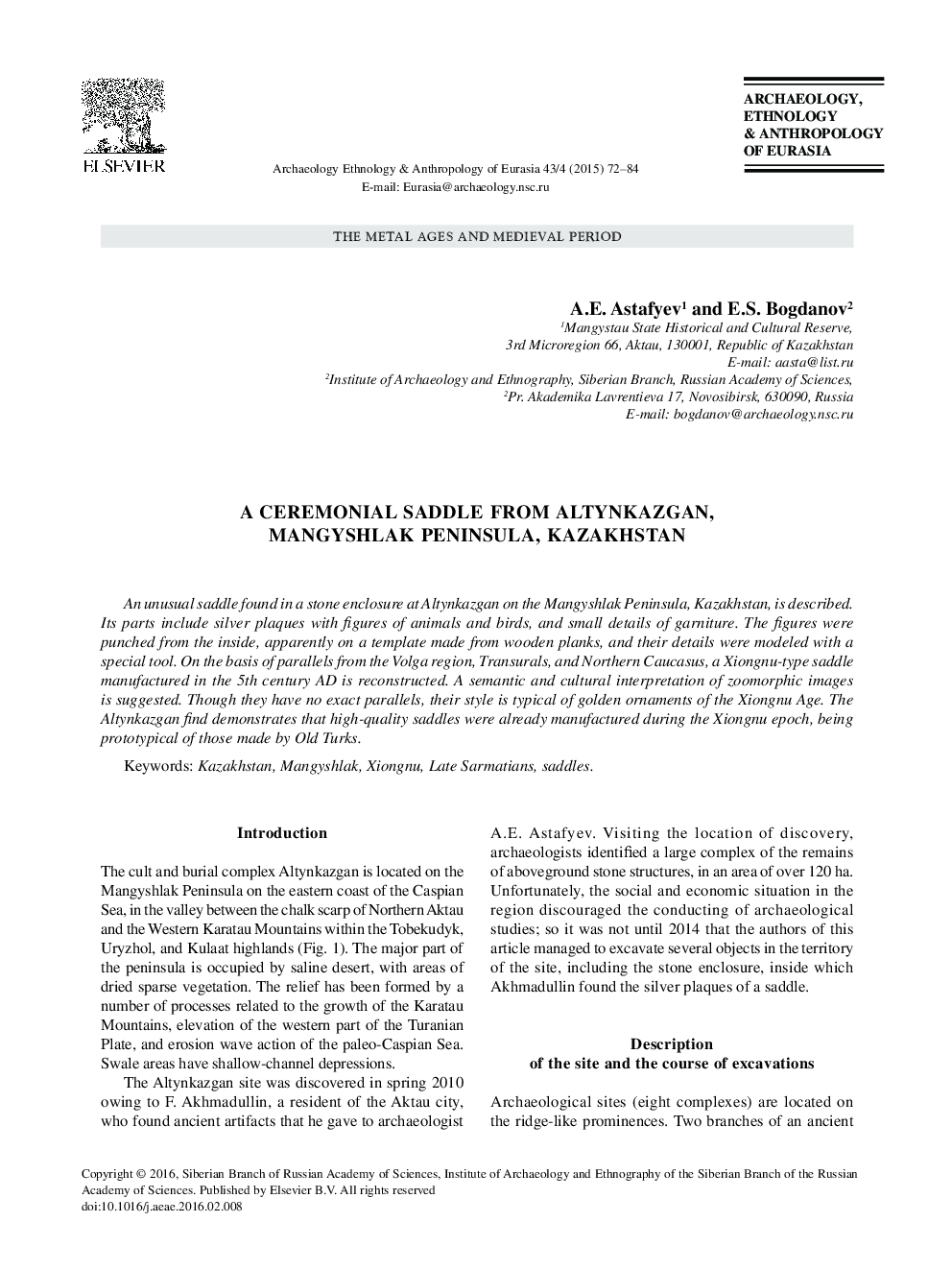| Article ID | Journal | Published Year | Pages | File Type |
|---|---|---|---|---|
| 1034183 | Archaeology, Ethnology and Anthropology of Eurasia | 2015 | 13 Pages |
Abstract
An unusual saddle found in a stone enclosure at Altynkazgan on the Mangyshlak Peninsula, Kazakhstan, is described. Its parts include silver plaques with figures of animals and birds, and small details of garniture. The figures were punched from the inside, apparently on a template made from wooden planks, and their details were modeled with a special tool. On the basis of parallels from the Volga region, Transurals, and Northern Caucasus, a Xiongnu-type saddle manufactured in the 5th century AD is reconstructed. A semantic and cultural interpretation of zoomorphic images is suggested. Though they have no exact parallels, their style is typical of golden ornaments of the Xiongnu Age. The Altynkazgan find demonstrates that high-quality saddles were already manufactured during the Xiongnu epoch, being prototypical of those made by Old Turks.
Keywords
Related Topics
Social Sciences and Humanities
Arts and Humanities
History
Authors
A.E. Astafyev, E.S. Bogdanov,
